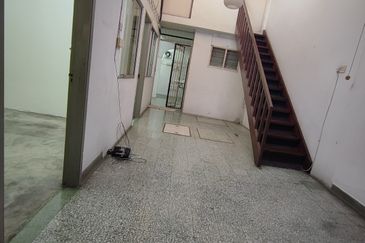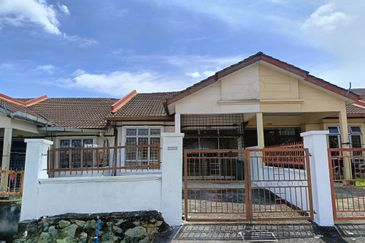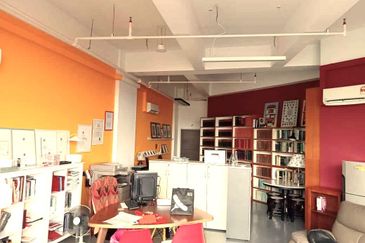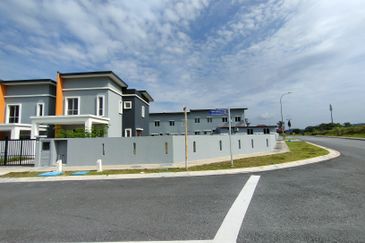
KUALA LUMPUR: As the COVID-19 outbreak continues to grow, Bank Negara Malaysia (BNM) yesterday announced another cut of 25 basis points (bps) in the overnight policy rate (OPR), marking the first time in 10 years that the rate has been reduced to 2.5%.
Hours later, the US Federal Reserve also announced an emergency half-percentage point interest rate cut in a bid to protect the longest-ever economic expansion from the outbreak.
Malaysia’s cut comes less than three months after a similar 25bps cut that was decided at the previous Monetary Policy Committee (MPC) meeting on Jan 22.
This marks the second time that the rate has been cut to 2.5%, the last time being in January 2009, when the central bank made a 75bps cut in the OPR followed by another 50bps cut the following month.
The cuts in 2009 were made amid a slump in Malaysia’s gross domestic product (GDP) due to the global financial crisis. At the time, the nation recorded an economic growth of 0.3% as at end-2008, down to -5.8% as at the end of the first quarter of 2009, before recovering to 4.5% at end-2009.
UOB Malaysia senior economist Julia Goh pointed out that the COVID-19 outbreak was prominently mentioned in the MPC’s statement yesterday, adding that there could be further cuts in the OPR going forward.
“Though BNM expects the stimulus package to provide some support to economic activity and expects growth to improve in the second half (2H) of the year, there are key downside risks given the uncertainty of the duration and severity of the virus.
“As such, we are not ruling out further OPR cuts from here,” she told The Edge Financial Daily.
Bank Islam chief economist Dr Mohd Afzanizam Abdul Rashid echoed a similar sentiment, saying that there is the possibility of another cut on the horizon, depending on how the economic outlook evolves going forward.
“The COVID-19 virus presents a shock to the global value chain. Additional monetary easing could help the economy to withstand the impact,” he said.
Nor Zahidi Alias, an associate director at Malaysian Rating Corp Bhd’s (MARC) economic research division, said the reduction in the OPR would assist the economy, adding that supporting private consumption is key as investments will likely remain sluggish amid the global and domestic economic uncertainties.
The outbreak will have an impact on Malaysia’s growth in 1H of the year, he said, with MARC’s estimates showing that GDP growth could moderate by roughly 0.3 percentage point.
“In 2019, private consumption was the main pillar of growth, contributing about 100% of headline growth. As such, the reduction in the OPR would, to some extent, help the economy go through this challenging period.
While the central bank has yet to indicate any change to its GDP growth forecast of between 4.3% and 4.8% for this year, OCBC Bank economist Wellian Wiranto said it would be considerably lower.
He noted that the government’s growth forecast was recently cut from 4.8% to a range of between 3.2% and 4.2%.
“From our end, we had recently shaded down our already-conservative 4.2% forecast to 4% in consideration of the virus impact. However, the recent political crisis and the subsequent hit on confidence are likely to hit growth even further.
“Depending on whether there is a relatively quick resolution to the sense of uncertainty about political leadership, growth is more likely to be between 3.6% and 3.8% now,” said the economist.
In its statement yesterday, BNM cited weak global economic conditions, given the COVID-19 outbreak which has disrupted production and travel activity.
The weak conditions have brought about greater risk aversion, translating into tighter financial conditions and greater financial market volatility.
“The reduction in the OPR is intended to provide a more accommodative monetary environment to support the projected improvement in economic growth amid price stability. The MPC will continue to monitor and assess the balance of risks surrounding the outlook for domestic growth and inflation,” said BNM.
It expects domestic growth to gradually improve in 2H of the year, but maintained that the COVID-19 outbreak is a key downside risk, as well as continued weakness in commodity-related sectors.
Click here to see commercial properties for sale in Kuala Lumpur.
This article first appeared in The Edge Financial Daily, on Mar 4, 2020.
TOP PICKS BY EDGEPROP

Taman Tun Dr Ismail (TTDI)
Taman Tun Dr Ismail, Kuala Lumpur

Happy Garden (Taman Gembira)
Kuchai Lama, Kuala Lumpur

Pearl Villa Townhouse
Bandar Saujana Putra, Selangor

Bukit Jalil, 2.5 Storey house (end lot), Taman Jalil Sutera, Kuala Lumpur
Bukit Jalil, Kuala Lumpur

Jalan Puteri 12
Bandar Puteri Puchong, Selangor

Menara HLX (formerly Menara HLA)
KL City Centre, Kuala Lumpur



















